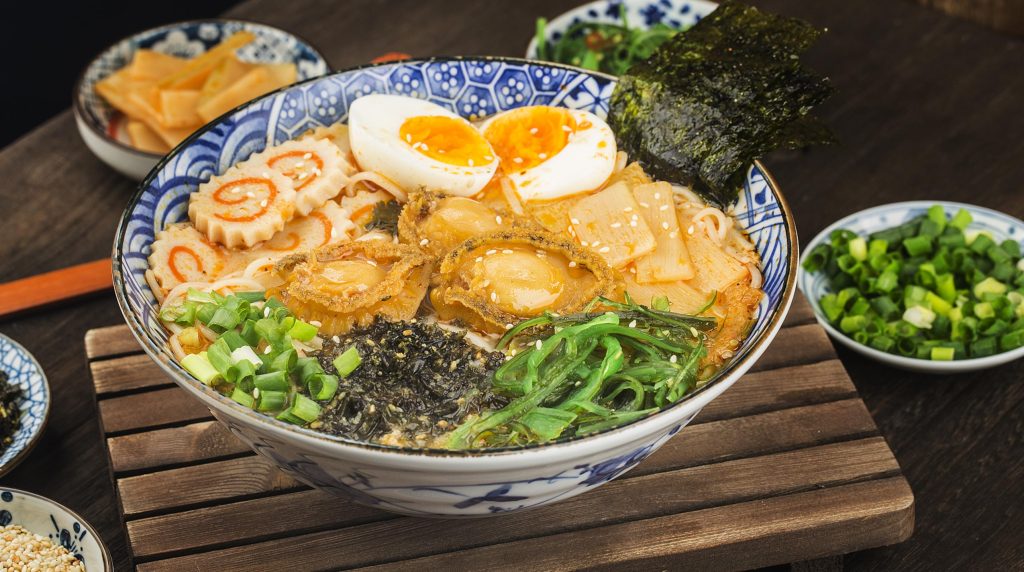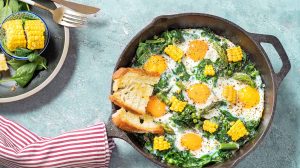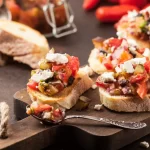The History of Ramen
Ramen is a hit in the United States, with more than 23,000 restaurants—or 3.5% of all eateries—serving the slurp-friendly noodles. You can even find ramen served in a fine dining atmosphere, a far cry from both its humble origins in Japan and its introduction to American markets as a cheap, quick meal.

So, what is ramen, anyway? We can tell you how ramen noodles are made, and we can tell you where ramen is from. But your personal answer to the question of what ramen is will vary depending on your history, your budget, and your willingness to break out the toppings.
The Origin of Modern Ramen
The Origin of Modern Ramen
Ramen is actually of Chinese origin, with most historians agreeing that it was brought to Japan by Chinese immigrants living in Yokohama in the late 19th century. Today, ramen restaurants offer a variety of styles and toppings, but early iterations of ramen were simpler—wheat noodles with Chinese-style roasted pork.
Soon, enterprising immigrants set up portable ramen stalls. This boosted its popularity among both fellow expatriates and the Japanese, who referred to the noodles as “Shina soba,” with Shina being an archaic Japanese word for China and soba being a blanket term for noodles at the time.
By 1900, Japanese restaurants were serving their own versions of ramen, typically a simple dish of noodles, some toppings, and a broth flavored with salt and pork bones. The Japanese cut the noodles instead of pulling them by hand as the Chinese did, but they kept one aspect of hand-pulling: The word “ramen” is a variation of the Mandarin term for “pulled noodles.” (The original moniker, “Shina soba,” quickly came to be seen as offensive.)
After World War II ended, the U.S. occupied an economically devastated Japan and purposely saturated the food market with wheat to compensate for (and control) the shortage of rice—a staple in Japanese cuisine. As a result, wheat-based noodles—such as ramen noodles—became more popular. This shift was hastened by the rise of black-market vendors, which many had to rely on for sustenance, as the Japanese government was frequently behind in food distribution. The copious amount of available wheat allowed vendors to feed the masses when the government couldn’t. Still, thousands were arrested for selling ramen after the war.
Ramen stalls made the dish available to the masses. But it was the entry of instant ramen noodles into both Japanese and American markets that would cement ramen’s place as a favorite among the budget-conscious.
Who Invented Instant Ramen Noodles?
Who Invented Instant Ramen Noodles?
The adage about necessity being the mother of invention comes into play in the postwar years. A Taiwanese-Japanese man named Momofuku Ando, who had spent years watching his community struggle with hunger, decided that someone should create noodles that could be easily made at home. Ando decided that someone should be him.
He spent months experimenting with how best to flash-fry wheat noodles in a laboratory he built before perfecting his method. Ando realized that boiling fried, dried noodles would rehydrate them, and that adding seasoning powder and dehydrated toppings could make countless flavor combinations possible.
On August 25, 1958, Ando began to market his instant ramen noodles. He chose chicken as the debut flavor, as people saw chicken soup as rich in nutrition—and very American. All consumers had to do to make what he named “Chikin Ramen” was add boiling water.
When Ando brought instant ramen to the States, he correctly theorized that Americans would not have ramen bowls on hand, so he sold the noodles in Styrofoam cups. In a culture that prioritizes convenience, this cup of noodles—or Cup Noodles, as Nissin Foods, the company Ando would eventually found to produce his instant ramen at scale, would call it—quickly became popular after its 1973 U.S. debut. Nissin Foods’ Cup Noodles and Top Ramen, along with other brands such as Maruchan, remain popular today for their low price and wide availability.
The embrace of instant ramen made it clear that Americans had an appetite for ramen in general, and in 1976 the first U.S. ramen restaurant set up shop in Los Angeles’ Little Tokyo.
What Is Ramen, and What Is It Made of, Exactly?
Ramen noodles are typically made from wheat flour, salt, water, and kansui, an alkaline mineral water containing sodium carbonate, potassium carbonate, and sometimes a small amount of phosphoric acid.
The broth
The broth is generally made from chicken or pork stock, combined with ingredients such as pork bones, striped tuna, dried baby sardines, shiitake mushrooms, onions, and kelp. The combination leads to a savory flavor that’s rich in umami and keeps most coming back for more.
The toppings
Ramen toppings are where slurpers can make the dish their own, mixing and matching to create the ramen of their dreams. Standard toppings include sliced pork, soft-boiled egg, fermented bamboo, wontons, pickled ginger, and fish cakes. But toppings are limited only by your imagination—people use Brussels sprouts, rotisserie chicken, Spam, and even American cheese.
What Different Types of Ramen Are There?
What Different Types of Ramen Are There?
Ramen can be classified in different ways, but generally speaking, there are four principal types of ramen, characterized by seasoning: shio, shoyu, miso, and kare.
Shio, meaning salt, is the oldest of the four variations and is typically pale and yellowish when added to the broth. Shoyu, or soy sauce, makes the broth salty and savory. Curly noodles, not straight ones, are traditional in shoyu ramen. Miso has been described as “uniquely Japanese,” since it was developed in Sapporo, the capital of Hokkaido, Japan. The broth features an abundance of miso blended with oily chicken or fish base. Last is kare, the newest flavor of the four, which is reminiscent of a curry soup made with pork bones and vegetables.
There are other types of ramen, such as champon (which sees the noodles cooked along with the other ingredients) and tsukemen (in which the noodles are served separately from the broth), but shio, shoyu, miso, and kare are the main four you’ll see.









